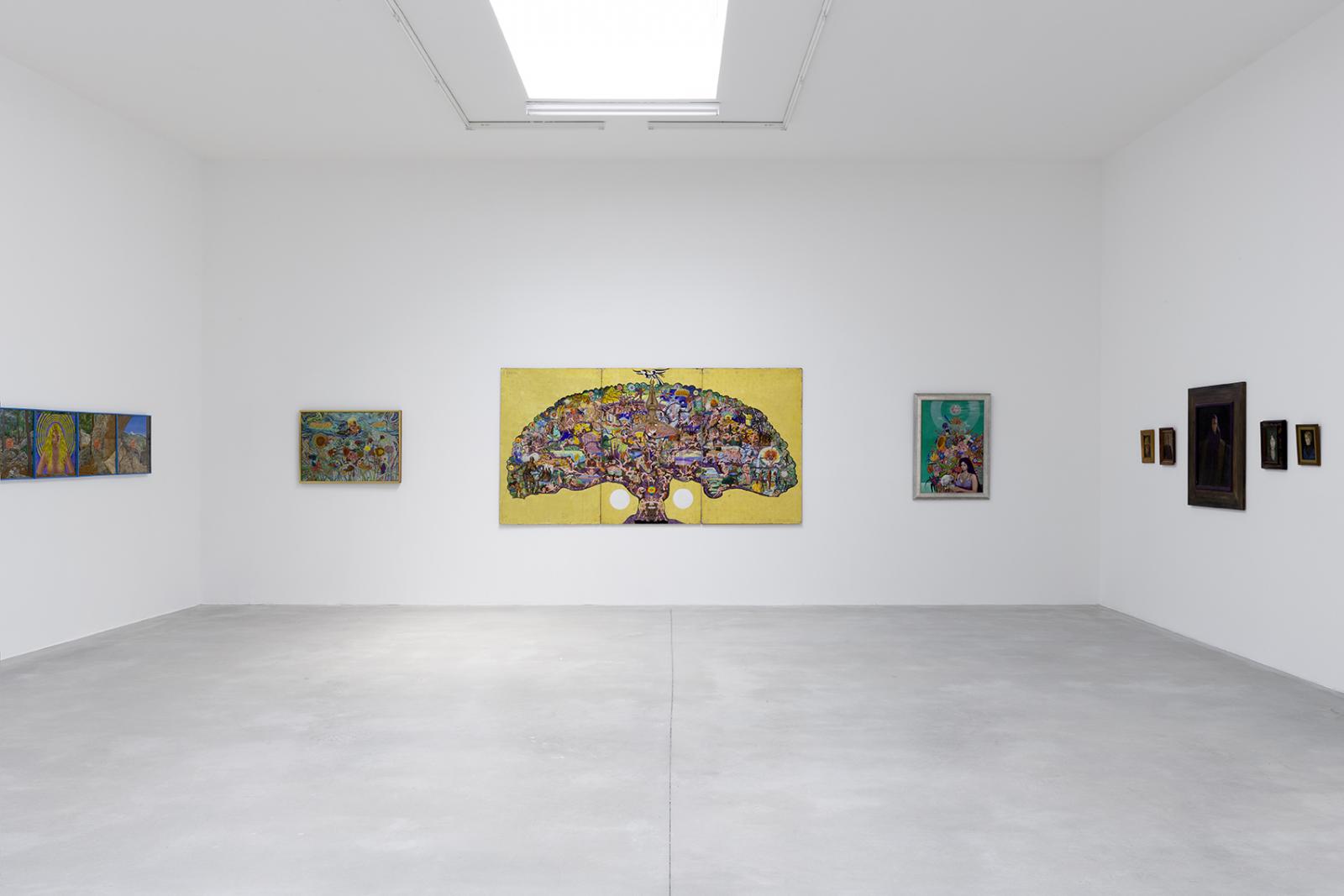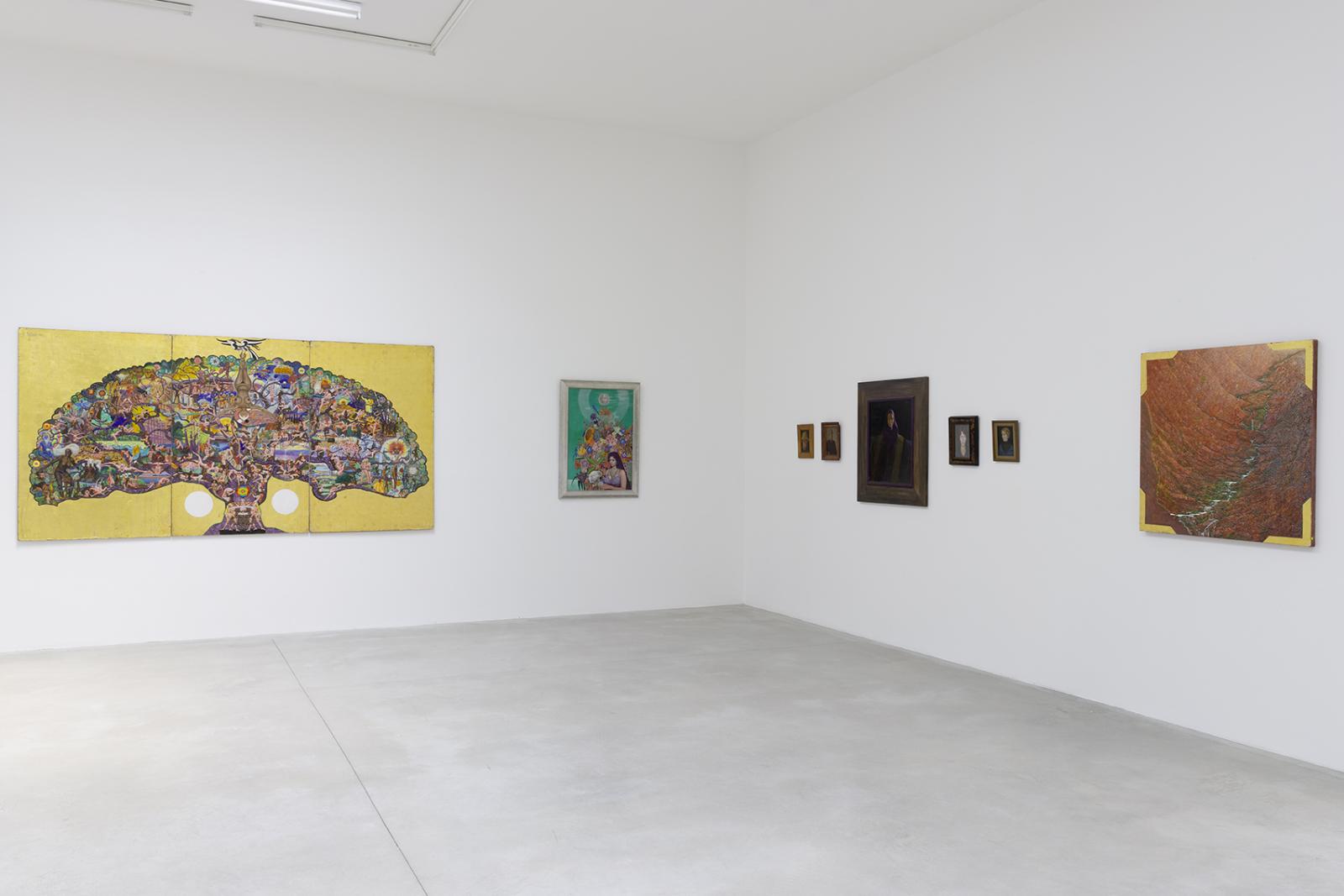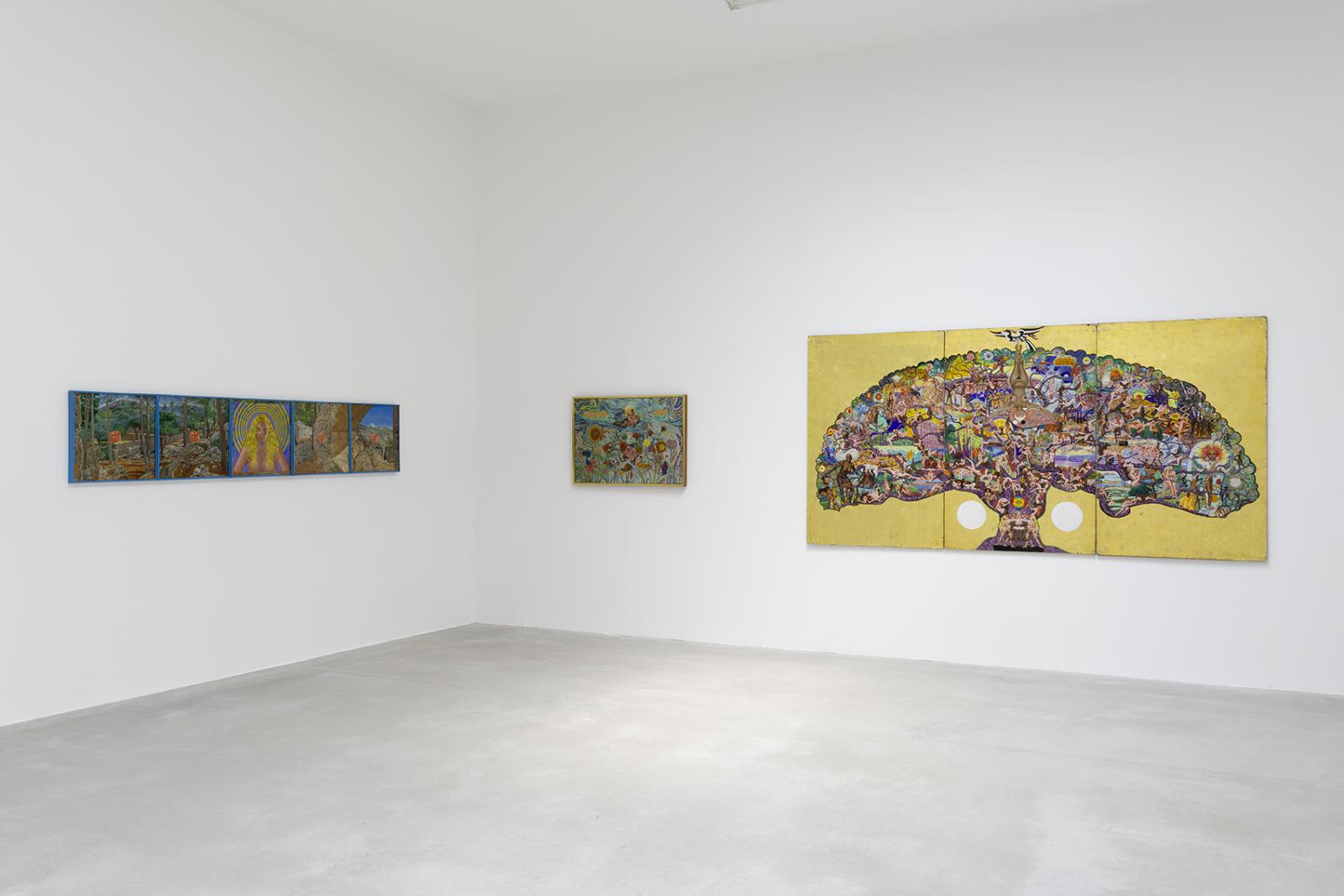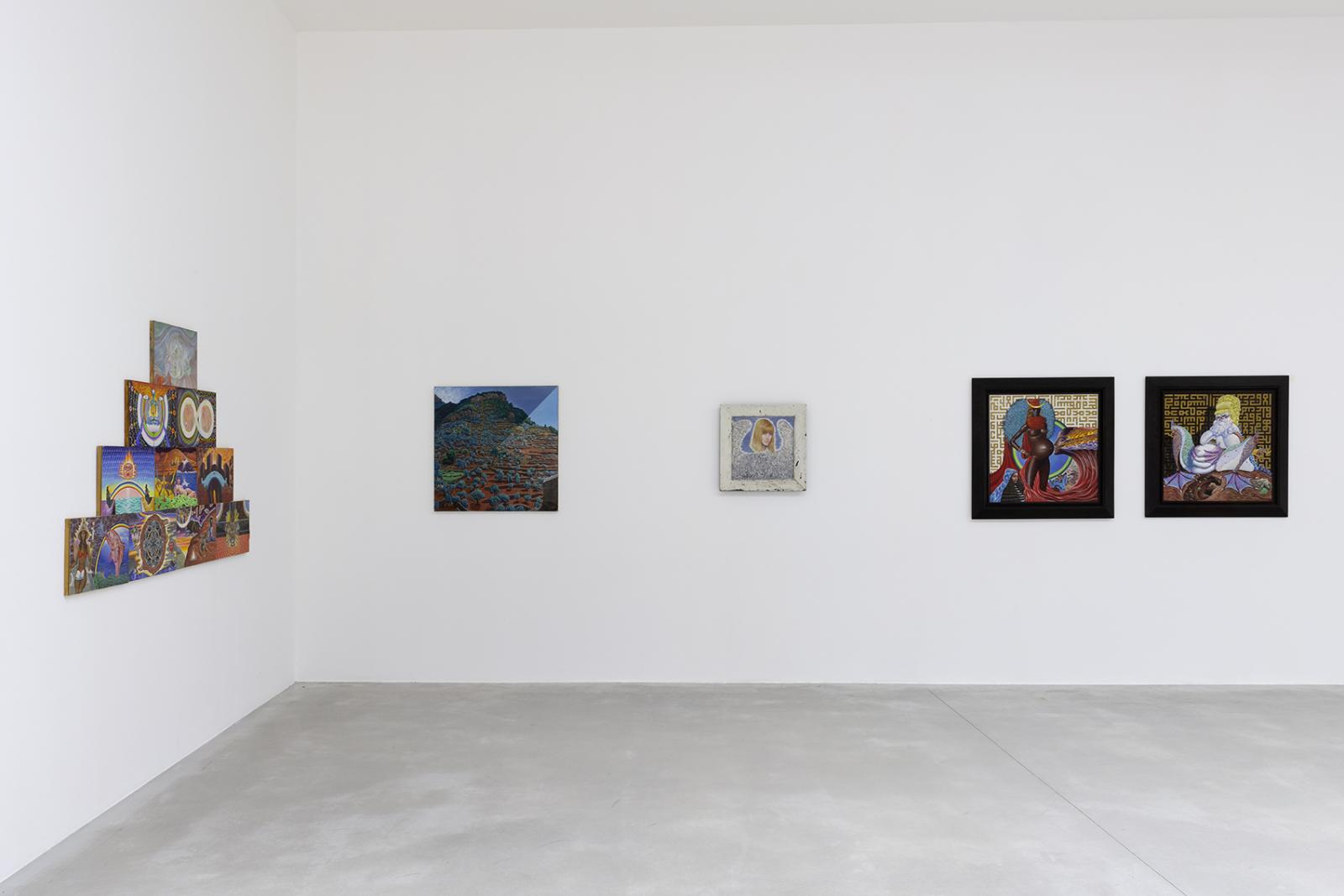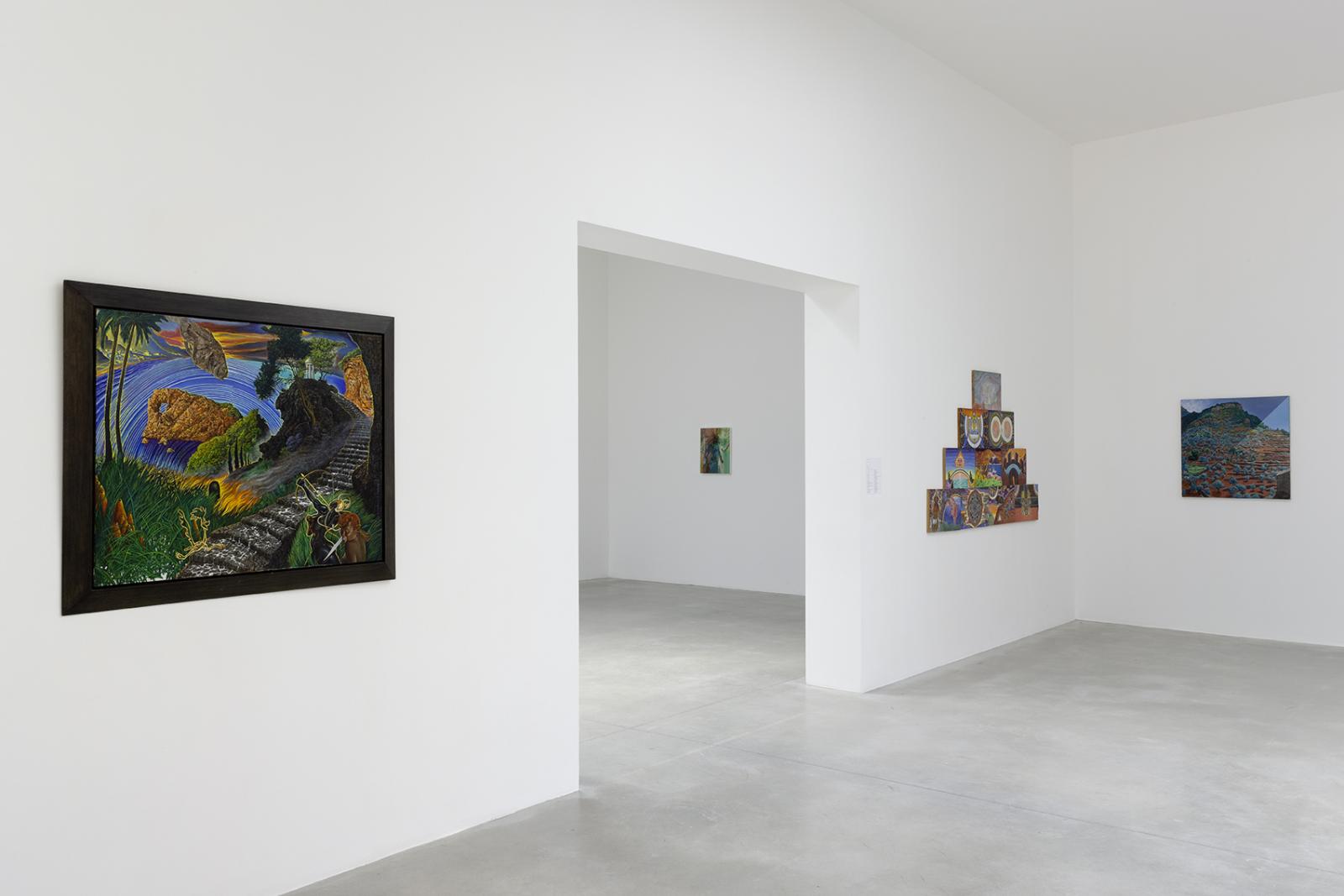Mati Klarwein
L'Almanach 18 : Mati Klarwein
“I am only half German and only half Jewish, with an Arab soul and an African heart.” In 1948, Mati Klarwein and his mother settled in Paris where Mati studied at the École des Beaux-Arts and also spent time in Fernand Léger’s studio. In 1956, he encountered the mysterious Kitty Lillaz, who led him to travel the world for seven years. Sojourns in Paris and New York (1967-1983) would follow, where he formed friendships with Miles Davis and Salvador Dali, among others. He would spend the rest of his life in Majorca. The most famous of unknown painters, Mati Klarwein produced paintings which became the images/illustrations of record covers for Miles Davis (Bitches Brew, 1970, Live - Evil, 1972), Santana (Abraxas, 1970), or Eric Dolphy (Iron Man, 1969).
Painted in tempera, often in small or average formats, Klarwein’s works depict fantastic worlds with a trompe-l’oeil precision: great subjects of mythological painting, society portraits of survival and friendships, landscapes of the Balearic Islands rendered with all the dryness of an oppressive heat, surrealist compositions, mystical flights of fancy specific to the hippie-roads-of-India-and-Bali era. Such a panorama naturally sent him to an indulgent, patchouli counterculture limbo scattered with the corpses of young people of every gender dead by overdose. His industrious painter posture–following his Austrian master Ernst Fuchs (1930-2015), guru of fantastic realism and a businessman in the Dali style–had banished him from the zones of contemporary art. The cruel debate of the avant-garde versus the underground was in this case the mark of a foretold institutional failure for the painting of images multi-reproduced into posters for sale in supermarkets. Does the success of printed images of works by Dali, Buffet, and Vasarely preclude them from being listed in the official history of art, and has it condemned them irremediably to these gray zones of malevolent success?
Klarwein, isolated in his Majorca house, but in touch with the world of starlets and wannabes, friends with tribes of musicians and top models, tirelessly painted genre scenes, portraits of his patrons and his loves, landscapes, drawn blind, and made experimental films.
Fifteen paintings from 1954 to 1999 have been brought together for the exhibition:
Portraits:
Self-portrait (Self Portrait with Straw Hat, 1954), portraits of his mother (Elsa Klarwein, 1958) and his father (Josef Klarwein, 1955) portraits of celebrities (Betty Catroux, 1965, top model and Yves
Saint-Laurent’s muse; Donyale Luna, 1967, the first African American top model to have featured on the cover of the British edition of Vogue, actress for Preminger, Warhol, Fellini, William Klein, she died from an overdose in 1979 in Rome.)
Mythological and biblical scenes:
Two paintings scattered with bunches of multicolored flowers framing a brown-haired woman with a dark gaze (Eve, 1963) or a bather in the background of a bed of flowers (Walking on Water, 1961). A series of small paintings (Reincarnation of Vishnu, 1967-1968) initially included in Klarwein’s major work (Aleph Sanctuary, a genuine “Sistine Chapel of psychedelia,” a temple devoted to all religions in the form of a 3-meter cube, which contained 68 of his works. Aleph Sanctuary was exhibited almost permanently in the artist’s loft where friends like Jimi Hendrix or Miles Davis were free to come and meditate.)
A polyptych (St Johns, 1962) in five elements, a triptych (Crucifixion, 1963-1965), the person crucified is a young black woman. She is upside down and milk spurts from her breasts. A highly decorated tree of life surrounds her, populated by gods, female and male saints, a large number of scenes from the Kama Sutra, and an abundance of nymphs.
This tree of life plunges us into a world of erotic frenzies. A diptych (Evil, Live, 1971) used for the famous eponymous record by Miles Davis released in 1972, which marked with Bitches Brew (released in 1969) the great trumpetist’s electric and psychedelic shift.
Landscapes:
Three landscape nature scenes, Night and Day, 1976, a field of olive trees on the side of a mountain shaped into terraces, Milkscape, 1983, a valley cutting a glowing red thalweg through a mountain from which a river of milk flows, Epicenter, 1999, a maelstrom of water and fire edged by exotic landscape, where the outline of the Roadrunner created in 1948 by Chuck Jones for Looney Tunes wittily appears.
A mixture of genres, employing Mischtechnik in the Van Eyck style superposing egg tempera with oil in multiple transparent layers, Klarwein’s painting, following on from Ernst Fuchs, who initiated him, displays a modest virtuosity and a suspect temporality at the service of images that are warm, reassuring, and intriguing all at once.
— Franck Gautherot
